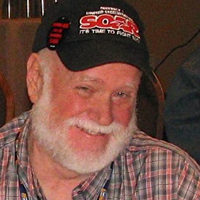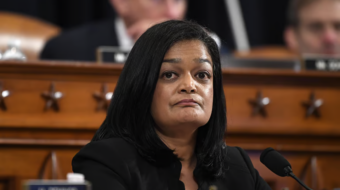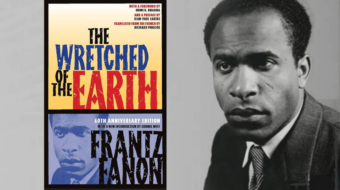There’s no reason in the world why anyone in the left-progressive and labor movements should be afraid of terms like “class struggle” or the” working class.” Sure, when the corporate rightwing gets even a whiff of fight back by working people, they start hollering “class warfare.” They’re bullies. That’s what they do. They try to scare people. For those folks I’ve always wanted a t-shirt that says “It’s a Class Thing, You Wouldn’t Understand.”
But of course they do understand. The capitalist class, the corporate elites, the ruling class, the right wing, the super-rich, whatever you want to call them, they understand. They understand their own class interests, or as my grandmother used to say “which side their bread is buttered on.” Truth be told, for the most part, they are conscious of their interest as a class. And let’s be honest, they are highly organized. Think Chamber of Commerce. Think National Association of Manufacturers. Think of all the K Street lobbyists. Think of all the industry, banking and investment associations.
But I really want to talk about the other side of the bread: working class consciousness. This is a time of emerging and growing working class consciousness. Our most basic form of organization, the unions and the labor movement, are growing again, not always in size, but in unity, activism and militancy.
It’s a mistake to just look at the numbers. We are bombarded by facts and figures about the declining membership of unions. I wonder why? Formal union membership numbers don’t come near expressing the breadth and depth of the working class movement. In the first place, those numbers don’t include nontraditional forms of the labor movement: workers centers, organizing committees in nonunion shops, and other similar informal, new forms of organization. And those numbers don’t include the family and friends of union members who support the goals and struggles of the labor movement.
Further, the numbers don’t reflect the broad coalitions unions are a part of and help to lead. We’re talking about explicit labor-community alliances like Jobs with Justice and Working America. There are issue oriented alliances that labor formally participates in like the Leadership Conference on Civil Rights, Labor for Peace, the Blue-Green Alliance and the Apollo Project.
Then look at the many activist organizations that have strong labor currents, in immigrant rights, in political action, and in civil rights and civil liberties organizations for example.
Numbers also don’t reflect those active in working class parties like the Communist Party USA.
So what are some elements of the growing working class consciousness of today? It begins with seeing ourselves as part of the working class and not as individuals. It also starts with the broadest possible definition of the working class. A definition updated for our times. It has to take into account changes in technology to include the many new occupations necessary today for the production of goods and services.
Increasingly labor leaders, workers, and progresses speak of “working families,” or “working people,” or even “the middle class.” In modern usage it is way too narrow to think that only the exact phrase “working class” conveys a class conscious view.
There is growing class consciousness shown in labor’s reach for the broadest possible coalitions, and labor’s increased independent political action. Examples like the labor walks and labor phone banks run out of union halls including voter registration and get out the vote efforts.
It shows itself in the broad range of labor’s role in social and political struggles. Just look at labor’s leading role in electing Barack Obama and fighting for health care legislation. Class consciousness is shown in labor and workers efforts in social and political struggles that go way beyond immediate economic interests.
The fight for unity of the class is also a central element of growing class consciousness. The labor movement’s role in fighting racism in 2008 to elect Barack Obama set the stage for an even greater push for equality. Likewise labor’s unifying stance in support of immigrant workers and against immigrant bashing is a critical class unity question. Labor’s greater attention to equality for women, not only on the jobs, but also in labor’s ranks and labor’s greater attention to younger workers and LGBT workers speaks to labors growing understanding or class unity.
Further the labor movement and workers are thinking much more globally. Larger and larger sections are seeing the need for workers of the world to unite. More and more unions are reaching out to workers around the world trying to figure out a world working class response to capitalist globalization and financialization. World trade union formations are growing and moving inexorably towards united action. This is taking concrete forms in specific industries and between specific unions.
More specific to today, labor is planning, mobilizing, leading, and immersed in the critical 2010 elections. And to quote Richard Trumka, “labor is not a wing of the Democratic Party.” In the heat of labor’s 2010 election efforts it is also helping to organize the October 2 One Nation March on Washington DC for jobs, peace, education, and equality. Why? Labor and the one nation coalition see a massive march in Washington DC as critical to stopping a right-wing Republican takeover of the House and Senate. Labor is independently taking its issues into all the election campaigns it supports.
Perhaps one of the most important indicators of growing class consciousness is labor’s maturity and leadership in the complicated tactics of today’s class struggle. Look at labor’s role in the health care struggle. Labor led in rejecting all or nothing tactics. Very few in the working class were satisfied with the final health care legislation. Most of labor and most workers were deeply frustrated by the zigs and zags of that struggle and by the compromises. Large sectors of labor and the working class supported single-payer or a full-fledged national healthcare service. Still they did not let frustration get the best of them as others did. And the day after the health care bill passed, they began planning the next steps in fighting for an even better health care system.
Labor is also showing its growing class consciousness in its dealings with the Obama administration and the Democrats. None are more frustrated with the lack of stronger, public works action for jobs, failure to pass key legislation like the Employee Free Choice Act, and other efforts important to the working class. Yet labor is one of the leading sectors of the Obama coalition and shows the way to disagree, even strongly, on specific issues while continuing to build even stronger coalitions that can actually win for workers in key fights.
Lastly, class consciousness is not an arrived at state of mind. It is a collective consciousness. It is a continual process built around the key class struggles of the day. Class consciousness develops on the broadest field of battle over time. It develops in collective class struggle that increasingly reveals the true class nature of the capitalist system to the working class. And it is not spontaneous. At all levels it requires leaders and organization.
Just as the word “socialism” doesn’t scare many in labor today. So too, we are not cowed by cries of class warfare. We are the many and they are the few.










